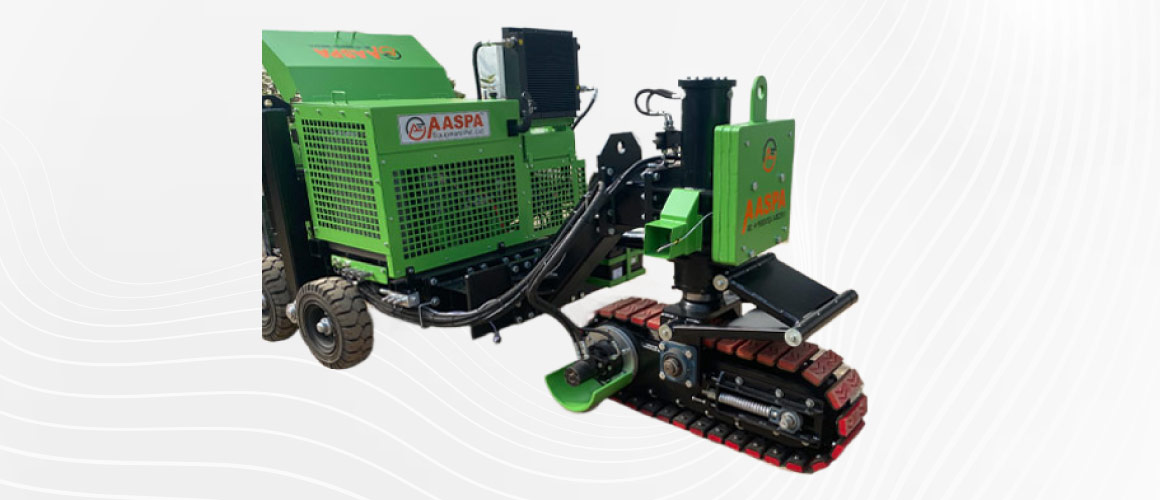How Do Water Parks Manage Pathway Segregation And Splash-Safe Boundaries With Kerbs Paving Machines?

Water parks are vibrant spaces designed for fun, movement, and constant water exposure. But beneath all the thrill rides and lazy rivers lies a strong focus on structured design and user safety. One of the less-talked-about yet essential components of a well-planned water park is how its pathways, zones, and wet-dry boundaries are laid out and separated.
The challenge isn’t just about creating visual sections—it’s about maintaining safe walkways that can handle foot traffic, direct water flow, and prevent slipping. This is where Kerbs paving machines come into the picture. These machines provide water parks with the ability to install clean, durable, and well-aligned boundaries that separate walkways from wet zones, reduce water splash crossover, and guide visitor movement.
This article explores how Kerbs paving machines help water park contractors and facility managers handle layout complexities, improve safety, and streamline construction efforts.
Why segregation and boundaries are non-negotiable in water parks?
Before understanding how the machines help, it’s important to grasp why these segmented areas matter. Water parks involve constantly changing environments. Water jets, spillage from rides, drainage overflow, and high footfall can quickly make zones unpredictable if not properly managed.
- Wet and dry zones require clear separation to avoid slip hazards, especially near food courts, locker areas, or lounge spots.
- Drainage efficiency depends on directing water away from certain sections to avoid puddling or erosion.
- Visitor traffic flow needs to be organized to prevent congestion and crowding, especially in high-activity areas.
- Design consistency and aesthetics must align with the branding and overall look of the park, which includes smooth Kerbs edges, curves, and junctions.
Role of Kerbs paving machines in creating structured layouts
Kerbs paving machines allow for faster and more precise installation of continuous concrete or stone boundaries. These machines simplify what would otherwise be a manual, labor-intensive task of forming Kerbs lines and edge channels across different terrains within the park.
- Uniform boundary creation
Kerb pavers help create consistently shaped edges—whether straight or curved—along splash zones, pool borders, or pathway divisions. This uniformity helps in both aesthetics and safety. - Efficient execution over complex terrains
Water parks often involves curving paths, elevation changes, and themed areas. Kerbs paving machines are adaptable to varied topography, delivering Kerbs that match the creative layout without compromising strength. - Timesaving during large-scale construction
A machine-laid Kerbs can cover significantly more ground in less time than manual processes, ensuring tight construction timelines aren’t delayed and park operations begin as scheduled. - Strong, water-resistant foundations
Kerbs installed with machines are compacted and formed in a controlled way, making them more resistant to erosion, water seepage, and constant dampness common in splash-heavy zones.
Specific challenges addressed with Kerbs paving in water parks
Each water park has its own layout, but the functional challenges around zones and boundaries remain fairly universal. Kerbs paving machines tackle several of these head-on.
- Preventing splash crossover into dry zones
Elevated or curved Kerbs lines act as water dividers around splash pads, ensuring that water doesn’t seep into walkways, dining areas, or ticket counters. - Creating safe slopes and channels for drainage
Kerbs work as subtle water guides. Machines can shape them to complement the gradient, so water naturally flows toward hidden drains rather than pooling around guest paths. - Designing user-friendly navigation
Through kerbing, visual and physical borders are created to help visitors understand where to walk, where to rest, and where to expect wet surfaces, improving overall park usability. - Maintaining aesthetic harmony
Kerb machines allow edge formations that blend well with themed environments, whether the park is styled after tropical islands, pirate coves, or futuristic water cities.
Types of Kerbs styles used in water parks
The choice of Kerbs design often depends on the specific area of the park and its functionality. Kerbs paving machines support a wide variety of cross-sections and styles suited for different zones.
- Flush Kerbs for wheelchair and stroller-friendly access zones
- Raised Kerbs around splash zones to stop water overflow
- Barrier Kerbs for defining ride queues or segregating restricted zones
- Tapered Kerbs for areas with both aesthetic and drainage needs
- Radius Kerbs for curving paths around wave pools or lazy rivers
Each of these styles can be quickly installed with the right machine setup, reducing the need for post-construction adjustments or touch-ups.
Conclusion
In water parks, where movement, moisture, and visitor safety intersect, the way boundaries and paths are built makes a real difference. Kerb paving machines simplify the complex task of designing splash-safe edges and walkable paths, delivering results that are both functional and visually aligned with the park’s layout.
From managing splash zones to guiding foot traffic, machine-laid kerbs add long-term value by supporting drainage, reducing maintenance, and speeding up construction. If you’re planning, upgrading, or maintaining a water park facility, choosing the right kerbing approach can save time and prevent costly rework down the line.
To learn more about Kerbs paving solutions designed for water park environments, reach out to us at info@aaspaequipment.com. Our team will help you choose the right machine and set it up for your project needs.
